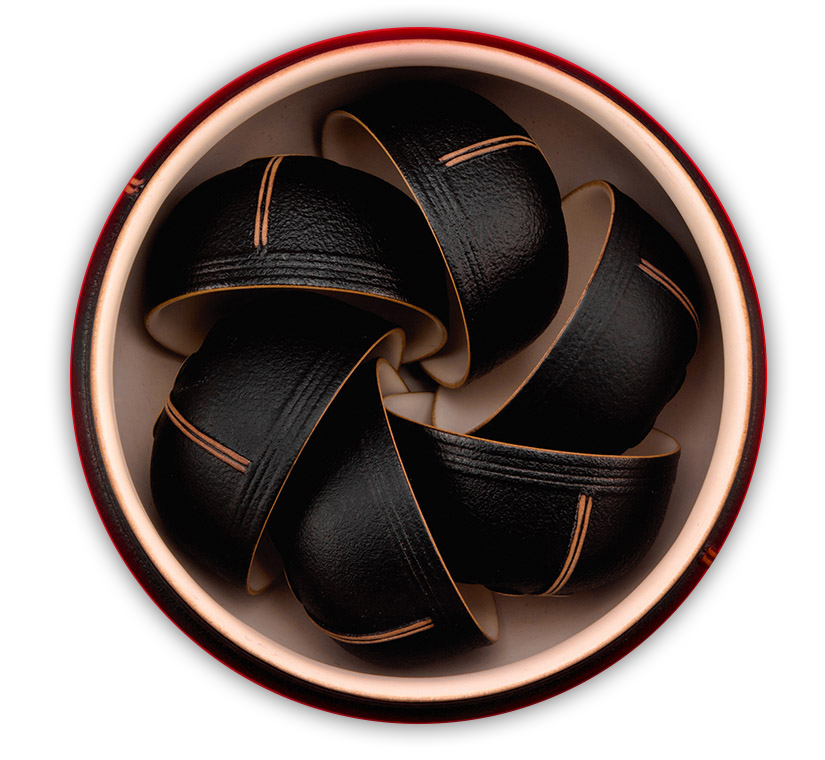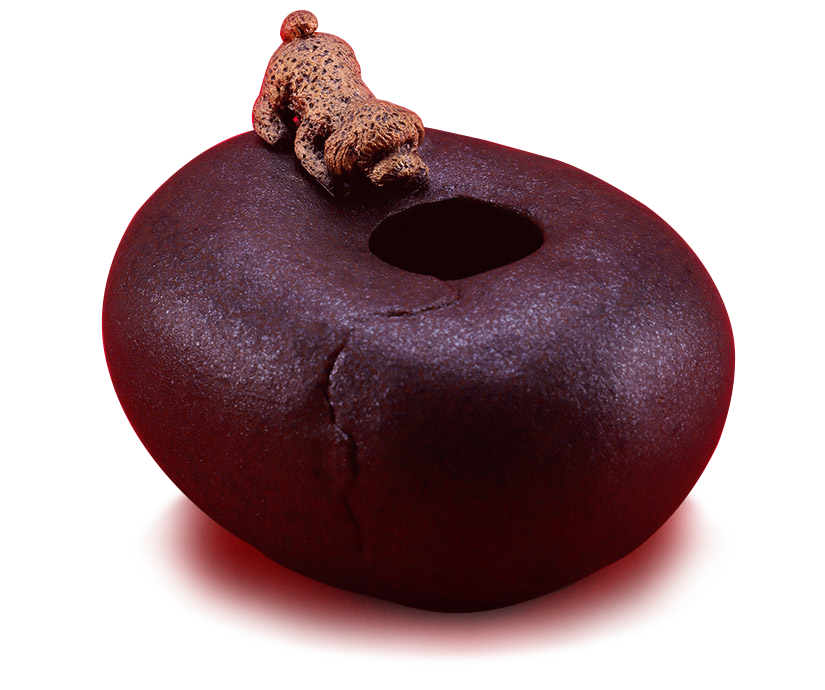守旺·典藏·成套
万仟堂推出2018戊戌狗年贺岁茶器,将真实的“狗狗”形象融入日常器物,
表达“犬守平安”和“万事兴旺”的美好祝愿,
寓意守护和旺财。
2018年生肖狗年贺岁茶器
荣获“第四届生肖陶瓷大赛”金奖
全国限量1999套
壶底底部刻有收藏编码
购买>
省力设计
茶壶手柄以提梁壶改造,树枝形态呈现,
考究用力点,凸出处理,
泡茶省力随性。
俏皮脚掌
杯底的脚印,调皮爱玩耍,
有主人的地方便有它,脚掌为手工擦釉,
俏皮喜气。
收纳有序
配有茶洗,茶席中可盛放富余茶水、置放时,
可收纳茶杯和杯碟。
出水顺畅
壶嘴经过特殊处理,树枝形态,线条优美,
出水自然畅快,收水自如不漏水。
购买>
探险狗
有花草的地方少不了它,有个性的它性格活泼、
勇敢大胆,俯身窥向那花插。
纹理直通
器身为手工描线,纹理直通,结构均匀,
增添设计感,有现 代工业之美。
开心狗
睡卧着的狗狗,既可以作为茶席茶宠摆设,
亦可以放置壶盖,乖巧如它。
守望狗
茶罐之狗对主人所珍爱的茶叶,
寸步不离的守护着,
主人每一次开罐亦是对它的宠爱。
手工技艺
Perfect
Craftsmanship
艺术与生活结合
Impeccable mixture between
art and life
个人梦想实现
realization of your
dreams
品牌(brangd)一词来源于古挪威文字“brandr”意思是“烙印”,它非常形象地表达出了品牌的含义——“如何在消费者心中留下烙印?”品牌是一个在消费者生活中,通过认知、体验、信任、感受,建立关系并占得一席之地,是消费者感受的总和。企业自身上能控制成本并不能产生利润,只有当消费者产生购买后才能产生利润,而能否让消费者产生购买的欲望,品牌的力量就开始显现。品牌竞争属于精神和心理层面的竞争,注重心理感受和情感满足,品牌定位必须体现消费者心智空间的需求。企业的商品力弱,缺乏竞争优势,难以实现所有企业家梦寐以求的附加值——高额利润;因为附加值低,企业缺乏产品研发后劲、管理升级以及市场推广的投入,没有强势的品牌竞争力,商品的市场竞争力就不敌竞争对手,其市场价值自然无从提升,由此带来更低的附加值,企业水平的高低决定着商家与商家之间的大小,也决定着产品与产品之间的成功与失败,更决定着商家与商家之间的强大与弱小。在企业的发展过程中,品牌与产品价格有着密切的关系,产品价格始终影响到企业的销售业绩及利润,而决定产品售价的除了产品的性能、技术含量、用途等之外,往往还存在一个无形的东西,那就是企业品牌。巨大的中国市场已经成为国内国际各企业共同争夺的主战场,企业不论实力、不论规模、不论资历,注定要在同样的环境下求得生存、渴望发展。要想在竞争中胜出,必须将注意力集中于创造具有核心竞争优势的“强势品牌”。强势品牌终极目标是为获得高额利润和可持续高速发展。无形资产的重复利用是一种低成本的复制成功,只要有科学的态度与高度的智慧来规划品牌延伸战略,就能通过理性的品牌延伸与扩张,充分利用品牌资源这一无形资产,实现企业与商家的跨越式发展。设计让价值看得见。设计让价值看得见。专业化的设计思想,是万仟堂产品设计机构自身价值之所以能不断实现的优势,专业技术、敬业精神、钻研态度是万仟堂赢得业内人士赞誉的基石。万仟堂的设计不只是某个单一的物品或功能,它是一个庞大的构思集合,而这些设计都源于同一个主题思想——质朴。全新的创作理念为陶艺世界带来独树一帜的新鲜血液和焕然一新的视觉感受。科学管理、规范运作的经营模式,为优秀人才提供了一个良好的发展平台。万仟堂设计机构所特有的核心优势在于,万仟堂认为每件作品的存在都是一个生命的存在。万仟堂珍爱每一个生命,更如尊重生命一样尊重每个产品的性格,主张以个性、差异界定作品的形象风格,寻求简洁、有力的视觉语言表述,拒绝浮华、媚俗的表现形式,力求每一个创作均能成为陶瓷艺术的经典,形成其独特的特征。万仟堂,更愿与积极进取的企业和同行共创品牌,同赢天下。
The word “brand” derives from ancient Norway word “brandr”, which means “imprint”. It vividly expresses the meaning of “brand”, which means “How to leave imprints in the heart of customers?”. Brand is the important relationship between customers and products, which comes from the customers’ cognition, experience, trust and feelings in their daily shopping lives. It is the combination of customers’ feelings. Enterprises will not make profits only with the ability to control production cost. Profits can only be made if the products are purchased by customers. Brand is the power to lead the customers to have the desire to buy, and here comes the power of the brand.The competition of brand belongs to spiritual and psychological competition, which emphasizes on psychological feelings and emotional satisfaction. Brand positioning must reflect the mental requirements of customers.If the enterprise is not powerful in commodity strength and has poor competitive advantage, it is difficult for the enterpriser to realize his dream of added value, which is making high profits. Because of the low added value the enterprise lacks in product research and development, management upgrade and the investment of market expansion. So the enterprise doesn’t have powerful brand competitiveness. As a result, the market competence of products can not compete with that of its competitors and naturally its market value cannot be upgraded resulting in lower added value and weaker competitiveness. Hence, there is difference in the size of enterprises, difference of success and failure between products and difference of strength and weakness between enterprises. In the development of enterprises, brand name has a close relationship with the prices of products, for the prices of products have an influence on the enterprise’s income and profit. Besides the product’s technology and its application, the factors that decide the prices of products include an intangible one, which is the enterprise’s brand name. The huge market in China has become the main market that enterprises jostle with one another for. Enterprises are doomed to survive and fight for development in the same environment regardless of strength, scale and experience. In order to win in the heated competition, enterprises have to concentrate on making “powerful brand”, which helps to create core competitive advantage.The eventual goal of creating powerful brand is to make high profits and realize sustainable and quick development. The repetitive use of intangible assets is a kind of successful low








